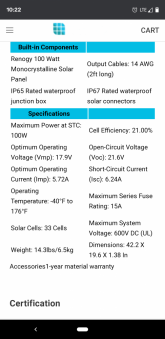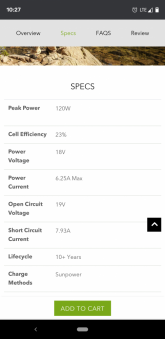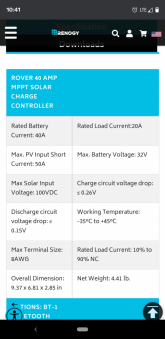johnpitts01
New Member
- Joined
- Oct 16, 2019
- Messages
- 31
I want to add a portable ground mounted solar panel to our existing roof mounted system.
Lithium batteries in the camper.
MPPT controller on the camper for the roof mounted panels.
The portable ground mounted panel will have its own MPPT controller.
Can we simply connect the portable panel to the battery terminals?
Lithium batteries in the camper.
MPPT controller on the camper for the roof mounted panels.
The portable ground mounted panel will have its own MPPT controller.
Can we simply connect the portable panel to the battery terminals?





